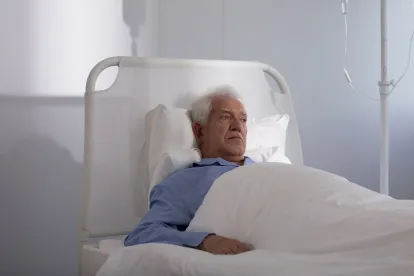Long term care facilities beware: The COVID-19 lawsuits and investigations are coming. Lawyers are suing to obtain the names of all facilities that have had COVID-19 positive staff and residents and they already are drafting complaints. Governmental agencies are closely monitoring facilities’ preparedness and response to the pandemic, with a particular emphasis on infection control efforts. CMS already has held facilities in immediate jeopardy and levied civil monetary penalties (“CMPs”) based on the pandemic, and largely with regard to infection control policies and practices.
The government has emphasized this and most recently, on April 19th, the Centers for Medicare and Medicaid Services (“CMS”) announced a new COVID-19 transparency effort applicable to nursing homes and is aiming to partner with facilities to keep residents safe. In fact, as part of President Trump’s Opening Up American, CMS will now require all nursing homes to report cases of COVID-19 directly to the CDC and to fully cooperate with CDC surveillance efforts around the COVID-19 pandemic. This is the most recent action taken by CMS to protect residents of LTC facilities.
When the lawsuits are filed and the administrative agencies knock on the door, long term care (“LTC”) facilities’ best defense will be their written documentation of all virus related and preparedness efforts, especially those efforts that follow recent CMS and CDS guidance. Without that documentation, LTCs risk exposure to enforcement actions, CMPs, and judgments.
What should LTCs be documenting? The simple answer is anything and everything related to their reasonable efforts to comply with CDC and CMS guidance about protecting staff and residents from the virus. That guidance is ample, and advises that LTCs:
-
Actively take steps to prevent the virus from entering the facility by:
-
Restricting all visitors from the facility. An exception can be made for compassionate care situations (e.g. end of life).
-
Restricting all volunteers and non-essential healthcare workers, including hairdressers, from entering the facility.
-
Actively screening anyone who tries to enter the building (e.g., x-ray technicians, vendors, consultants) for virus symptoms, such as a fever.
-
Canceling all resident field trips outside of the facility.
-
Identify signs of infection in residents and staff early by:
-
Actively screening staff at the beginning of each shift for fever and other symptoms of COVID-19.
-
Actively screening residents on a daily basis for symptoms of COVID-19.
-
Immediately sending sick staff members home.
-
Immediately isolating sick residents and implementing appropriate transmission based precautions.
-
Notifying state or local health departments immediately (in less than 24 hours) if the facility has any of the following: a resident with a severe respiratory infection causing hospitalization or sudden death; a cluster of 3 or more residents or staff members with respiratory infection; or any individuals with suspected or confirmed COVID-19.
-
Prevent the spread of COVID-19 within the facility by:
-
Canceling all group activities and communal dining.
-
Enforcing social distancing among residents.
-
Requiring all residents to wear a cloth face covering whenever they leave their rooms or are around others.
-
Requiring all staff to wear a facemask or a cloth face covering while they are in the facility.
-
If COVID-19 is present in the facility, restricting all residents to their rooms and have staff wear recommended PPE (including a N95 respirator, gloves, gown, and eye protection) for care of all residents.
-
Issuing guidance on the proper use and optimization of PPE.
-
Reinforcing infection control responsibilities and urging facilities to work closely with their communities to identify the need for COVID-19 testing and PPE.
-
Urging state and local officials to work with facilities to designate certain sites for COVID-19 positive or negative patients to prevent further spread.
The CDC’s guidance is located here.
Helpfully, the CDC offers a comprehensive preparedness checklist for LTC facilities, which is a helpful guide of activities LTCs can be implementing and of which they should keep a written track record. The checklist can be found here. The checklist includes action items for LTCs to be able to easily show that they reasonably prepared for and protected staff and residents from the virus, such as:
-
Creation of a multidisciplinary COVID-19 task force to address preparedness planning.
-
Development of a written COVID-19 response plan (which includes the above best practices, an infection control policy, and staffing considerations).
-
Training of all staff on that response plan, on how to identify signs of the virus, on how to use PPE, etc.
-
Contact with local or regional planning groups to coordinate the facility’s plan with other COVID-19 plans.
-
Ensuring a sufficient supply of face masks for staff and residents, necessary PPE for staff, and hygiene and disinfectant products available to staff and residents.
-
Planning for a surge capacity for staffing, equipment, and supplies.
The CDC’s checklist is not mandatory (yet). However, it is an extremely useful documentary tool for LTCs to implement and help put themselves in the best positon to not only protect their staff and residents, but also themselves when faced with future pandemic lawsuits and investigations.
When in doubt, document. LTCs will be glad they did when the pandemic quiets and the lawsuits and regulatory actions begin.



 />i
/>i

